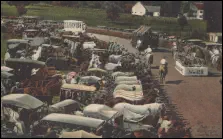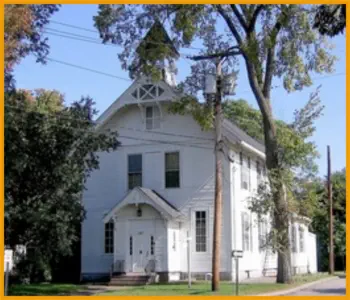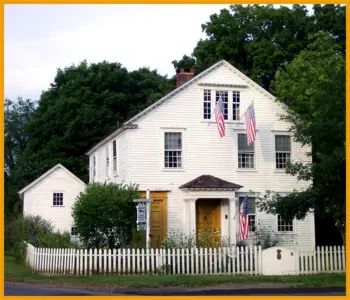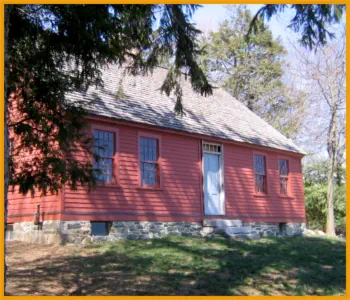



Orange Historical Society


Orange, Connecticut
History
Orange Country Fair
Following
the
Grange's
successful
experiment
with
agricultural
f
airs,
the
Orange
Agricultural
Society
was
formed
in
1900
to
continue
the
fair
in
a
larger
way.
Twelve
men
served
as
a
Board
of
Directors:
Watson
S.
Woodruff,
Walter
S.
Hine,
Arthur
D.
Clark,
Edward
L.
Clark,
Clifford
E.
Treat,
Frank
C.
Woodruff,
Walter
H.
Beecher,
Edward
W.
Russell,
Charles
S.
Clark,
Sylvester
G.
Colburn,
Patrick
J.
O'Rourke,
and
Benjamin
T.
Clark.
A
few
acres
of
land
on
the
Orange
Center
Road,
just
a
little
south
of
the
Green,
were
leased
from
S.
D.
Woodruff
and
Sons
and
the
Clark
brothers,
and
a
half-mile
race
track
was
built
with
a
large
grand-stand.
A
two-story
building
was
erected
to
hold
the
vegetable
exhibits
and
the
fruit
exhibits
on
the
first
floor,
with
the
second
floor
devoted
to
the
women's
department.
Here
were
found
specimens
of
fancy
work,
bed-quilts,
and
knitted
or
crocheted articles, besides all kinds of food, canned fruits and vegetables, and many kinds of jellies.
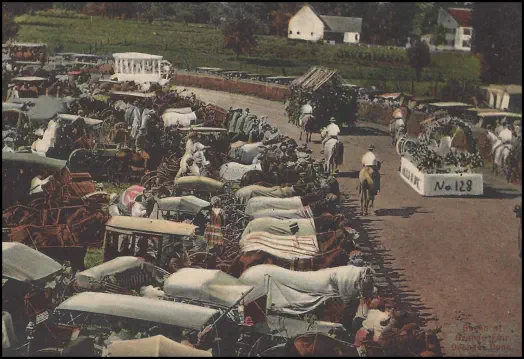












Bryan Andrew









Orange Historical Society
Orange, Connecticut








Bryan Andrew





History
Orange Country Fair
Following
the
Grange's
successful
experiment
with
agricultural
f
airs,
the
Orange
Agricultural
Society
was
formed
in
1900
to
continue
the
fair
in
a
larger
way.
Twelve
men
served
as
a
Board
of
Directors:
Watson
S.
Woodruff,
Walter
S.
Hine,
Arthur
D.
Clark,
Edward
L.
Clark,
Clifford
E.
Treat,
Frank
C.
Woodruff,
Walter
H.
Beecher,
Edward
W.
Russell,
Charles
S.
Clark,
Sylvester
G.
Colburn,
Patrick
J.
O'Rourke,
and
Benjamin
T.
Clark.
A
few
acres
of
land
on
the
Orange
Center
Road,
just
a
little
south
of
the
Green,
were
leased
from
S.
D.
Woodruff
and
Sons
and
the
Clark
brothers,
and
a
half-mile
race
track
was
built
with
a
large
grand-stand.
A
two-story
building
was
erected
to
hold
the
vegetable
exhibits
and
the
fruit
exhibits
on
the
first
floor,
with
the
second
floor
devoted
to
the
women's
department.
Here
were
found
specimens
of
fancy
work,
bed-quilts,
and
knitted
or
crocheted
articles,
besides
all
kinds
of
food,
canned
fruits
and
vegetables,
and
many
kinds of jellies.
